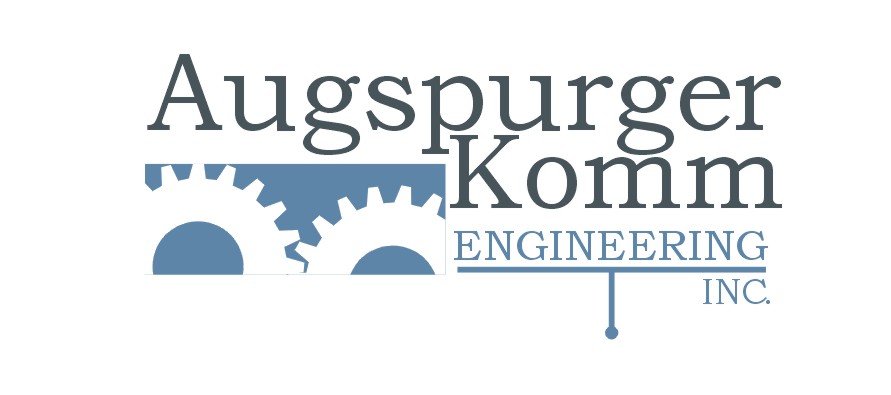The gradual deterioration of materials can result in costly damage and is an ongoing and everlasting concern with water-conveying systems, including fire sprinklers. Sprinkler systems have become more and more commonplace over the past several decades, to the point where they are prevalent throughout the built environment. The safety of building occupants in the event of a fire emergency is the purpose of their implementation, yet failures are regular occurrences that can result in significant water damage. While these systems are susceptible to a variety of recognized issues, the current focus is on failures that occur in the risers.
Subject matter expert, Todd Springer provides a unique view on the issue. For the last 15 years at Augspurger Komm Engineering, Mr. Springer has provided expertise in matters relating to material failures, code compliance and industry standards of care. His investigations require a working knowledge of operating conditions, required/preventative maintenance, and industry standards. The application of human factors (also referred to as engineering psychology), material science, and thermodynamics/heat transfer allow for additional insight and understanding of failure modes.
Fire Riser and System Basics
Commercial fire sprinkler systems are plumbed with steel pipe, which will experience corrosion as part of its service life. Corrosion in these systems is expected, and monitored through regular inspection and maintenance activities, which are governed through practices adopted by the Authority Having Jurisdiction (AHJ). The fire riser describes the portion of the system where water enters the building from the supply source (often the municipal water system). The riser is often vertical, and at some point, contains an isolation valve, separating the municipal supply from the fire sprinkler system. Finally, downstream of the control valve, the riser incorporates a water flow alarm, which is activated when water flows through the system.
The Corrosion Process
Corrosion is an electrochemical process that results in chemical and physical changes, converting a refined metal into a more chemically stable oxide (often the as-mined condition). With respect to steel and rust, the process requires three elements, often referred to as the corrosion triangle. These elements are: 1) the material (steel); 2) oxygen; and 3) water (an electrolytic solution). Limiting one of these elements will reduce the rate of corrosion.[i]
Because of the various contaminants that can be introduced into a fire sprinkler system, a backflow preventer or check valve is required in the riser, to ensure that the water in the system will not flow back into the municipal water supply. The isolation of the system creates a ‘dead-end’ for the municipal water supply in the fire riser, where dissolved oxygen can accumulate, resulting in accelerated corrosion.
Another phenomenon that regularly occurs in fire sprinkler systems is microbiologically influenced corrosion (MIC), where the corrosion of the piping is accelerated by the presence of specific microorganisms. MIC is more prevalent in these systems due to the lack of water flow. Even if MIC is treated within the fire sprinkler system, it can remain untreated in the riser.
Why it Matters: Current Practices and Responsibility
While codes and standards provide requirements for the inspection, testing, and maintenance of fire sprinkler systems, the portion of the riser below the valve is generally unaddressed, as it is not strictly part of the system. However, the entire riser is often contained within the building. As risers are often four inches or larger in diameter, when a leak occurs in the riser, significant amounts of water can be released. For comparison, a four-inch diameter pipe will allow approximately 30 times more water to flow than a typical garden hose at a home. Making matters worse, a leak in the riser would not activate the alarm, allowing it to go unnoticed/unidentified for a prolonged period of time.
As corrosion is inevitable, the failure of the riser piping on the municipal side of the isolation valve is inevitable. However, as the maintenance of this section is not addressed in authoritative and adopted literature, owners of these systems (i.e., building owners) can easily be unaware of any need to inspect or maintain them. Complicating this issue further are changes in ownership and fire sprinkler maintenance contractors. A lack of thorough records leaves the owner with incomplete information. For example, if the system were treated for MIC by a previous owner and fire sprinkler servicer, that information can easily be unknown to the current owner and system servicer. Therefore, the inevitable, and accelerated/premature failure of the riser would also be unknown.
Even if the riser does not fail prematurely, its inevitable failure may not be understood by the building/system owner. If the servicing entity for the fire sprinkler system does not convey this information, and the severity of the consequences, the owner can be left high and dry.
Summary: Ultimately, the issue with fire riser corrosion is similar to several other issues throughout the current built environment; information conveyance. With increasing complexities in building systems and materials, there are more potential failure modes that building owners may not understand. The solution requires knowledge of the issue or, a requirement to address it before it results in failure. When it comes to fire risers, addressing them in authoritative and enforced codes and standards could have a drastic impact on the number of unexpected and catastrophic failures.

[i] Cox G. L. & Roetheli B. E. (1931). Effect of Oxygen Concentration on Corrosion Rates of Steel and Composition of Corrosion Products formed in Oxygenated Water. Industrial & Engineering Chemistry 23 (9), 1012-1016 DOI: 10.1021/ie50261a011

